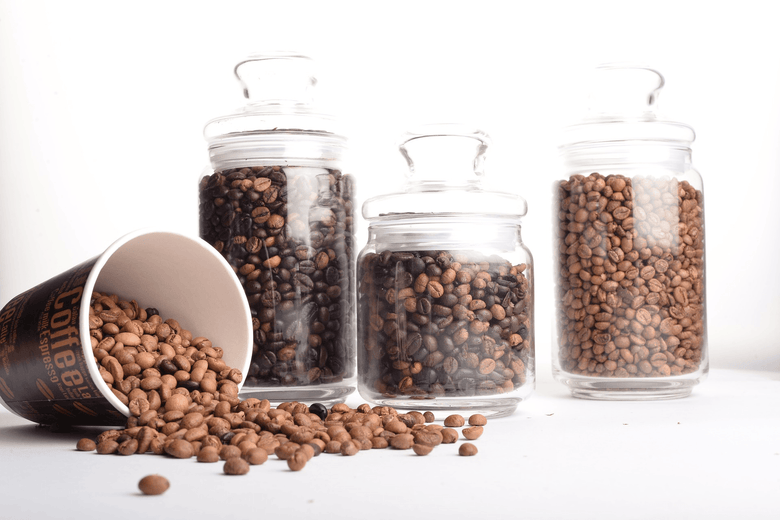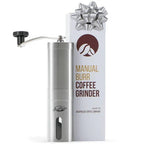Have you been drinking the wrong coffee? If you've been confused by roast levels recently, it's not just you.
Light roast is now a thing. It's not just for people who don't like strong coffee anymore, it's also for those who want to enjoy their morning cup of joe without that heavy feeling in their stomach. Now there are more options than ever before!
You can have your cake and eat it too with these new lighter roasts. These coffees will be sure to satisfy any palate - no matter how they prefer their beans roasted!
But, what are they and which one is best for you?
- Why modern light roast coffees taste better and better
- The BIG differences between "specialty" roasts (light, medium, dark)
- Why you don't ever want to buy french roast beans again
Once we’re finished, you’ll be equipped with all the information you need to navigate the new world of specialty coffee roasting.
Why Are Coffee Roast Levels Changing?!
There’s very little standardization when it comes to coffee roast naming. If you go to the grocery store and grab a light roast off the shelf, those beans will probably be darker than the beans sold by most specialty coffee roasters.
One roaster’s dark is another’s light. Yeah, it can be quite confusing.
Here's why it's happening...
- Coffee bean quality is on the rise. Farmers are getting better and better, which means coffee beans with exceptional flavors are easier to find.
- Roasters don't have to hide bad flavors. Really dark roasts are designed to mask low-quality flavors (like leathery, musty notes), but since coffee quality is on the up-and-up, it's not necessary anymore.
- Lighter roasts have more complex flavors. Now that roasters can roast lighter without getting awful flavors, they're discovering new ways to highlight unique, wild flavors in the high-quality beans.
And this means that the scale from dark -> medium -> light can move to a lighter area altogether while improving flavor.
So even though it's confusing, it's good... it means coffee is getting better and better tasting!
But Wait - Which Has The Most Caffeine?
I always grew up hearing that dark roast coffee is “strong” and has the most caffeine. For the most part, this was just a bunch of misinformation and guessing.
In reality, 50g of dark roast coffee and 50g of light roast coffee have roughly the same amount of caffeine. Measuring by weight (mass) will give you about the same caffeine every time, regardless of roast level.
However, this caffeine myth does have an understandable origin.
Light roast beans are more dense than dark roast beans, so each individual bean has slightly more caffeine. Dark roasts are less dense, so each bean has slightly less caffeine.
Measuring by scoops (volume) doesn’t take the density of the beans into account like measuring by weight (mass) does, which is where this myth is born. So one scoop of light beans may result in 70 mg of caffeine, while one scoop of dark beans may only produce 65 mg.
As you can see, 5 scoops of a light roast contains slightly caffeine than 5 scoops of a dark roast. It doesn’t have to do anything with the roast level - it’s all in the measurements.
Light Roast Coffee
Light roast coffee is a light brown color and has no oil on the surface of the beans. These coffees typically have a crisp acidity, a mellow body, and bright flavors.
These coffees are roasted in order to preserve the unique characteristics of the bean. As long as the beans were well grown, processed, and roasted, they can produce a very wide variety of flavors, aromas, aftertastes and beyond.
Read: Learn How To Taste Coffee
Light roasting is beloved in the specialty coffee industry for its ability to bring more vibrant, unique flavors out of coffees. They highlight the unique characteristics of a coffee’s origin more than any other roast style.
Light roasted coffee often reaches an internal temperature of 350-400 degrees Fahrenheit. These beans barely reach what we call “first crack”, a stage where the vapors inside the beans break through the outer wall and create a “cracking” noise.
Other names include: cinnamon, light city, and half city.
Medium Roast Coffee
Medium roast coffee is a brown color and rarely has an oily surface. These coffees have a medium acidity and body, as well as a rounded flavor profile.
Roasting to this level also preserves many of the unique flavors of the coffee’s origin, but it also begins to reach into the deep caramel sweetness of a longer roast. As a result, these coffees are balanced, well rounded, and are slightly darker and sweeter.
Some of the brightest notes of a light roast may be eliminated, but it’s a trade-off for extra balance.
Read: The Golden Ratios in Coffee Brewing
Specialty coffee roasters love medium roasts because they are more approachable than light roasts to the average coffee drinker. They’re less acidic and intense, but still can showcase a coffee’s natural flavor profile.
Medium roast coffees reach 400-430 degrees Fahrenheit and are typically roasted a little beyond first crack, but not all the way to second crack.
Other names include: regular roast, American roast, city roast.
Dark Roast Coffee
Dark roast coffee is a dark brown color and often has an oily surface. These coffees have a low acidity, heavy body, and tend to reveal deeper, darker flavors.
Coffees roasted to this level tend to not have many of their origin characteristics left, but that doesn’t mean that these are bland and boring. Some coffees really lend themselves to a dark roast because they thrive with chocolate-y, nutty, and caramel flavors.
The difference between light and dark roast coffee is quite dramatic. I highly suggest trying a light and a dark coffee side-by-side to really taste the difference.
Specialty coffee roasters rarely have more than 1 or 2 dark roast offerings. Without much flavor diversity amongst beans (dark roasting increased uniformity), there’s no reason to have many.
Read: What Does A Coffee Roaster Actually Do?
Dark roast coffee has long reigned king, largely because coffee quality wasn’t great in the past. Roasters would “roast away” the less desirably flavors of low grade coffee to find deeper, more uniform, and more approachable ones.
This was an understandable way to combat low quality coffee, but it’s no longer needed. Specialty grade coffee has never been more available to roasters.
Now, the goal of a specialty roaster isn’t to roast away bad flavors, but lean into deeper, darker pleasant ones if a particular coffee calls for it.
Dark roast coffees reach 430-450 degrees Fahrenheit in the roaster and typically reach second crack, if not a little beyond.
Other names include: full city, vienna roast.
Other Coffee Roast Levels
French roast, Italian roast, continental roast, espresso roast, New Orleans - these are all darker than dark. These coffees are often black as night and are very oily on the surface.
Coffees roasted to these levels have no characteristics of their origin. For the most part, they just taste like burned, ashy coffee.
Read: 3 Reasons To Avoid French Roast Coffee
Specialty roasters never roast their expensive, carefully chosen beans this dark. It’d be a waste of excellent tasting coffee. We don’t suggest you ever buy beans roasted this dark - unless you just like the taste of liquid charcoal.
---
If you're used to buying beans from the grocery store, you won't believe how much flavor specialty-grade, freshly roasted coffee can have at every roast level.
We'd love to show you :)
So Here's What You Should Do Next
For the best cup of coffee, grind your beans fresh each morning with our JAVAPRESSE GRINDER!







